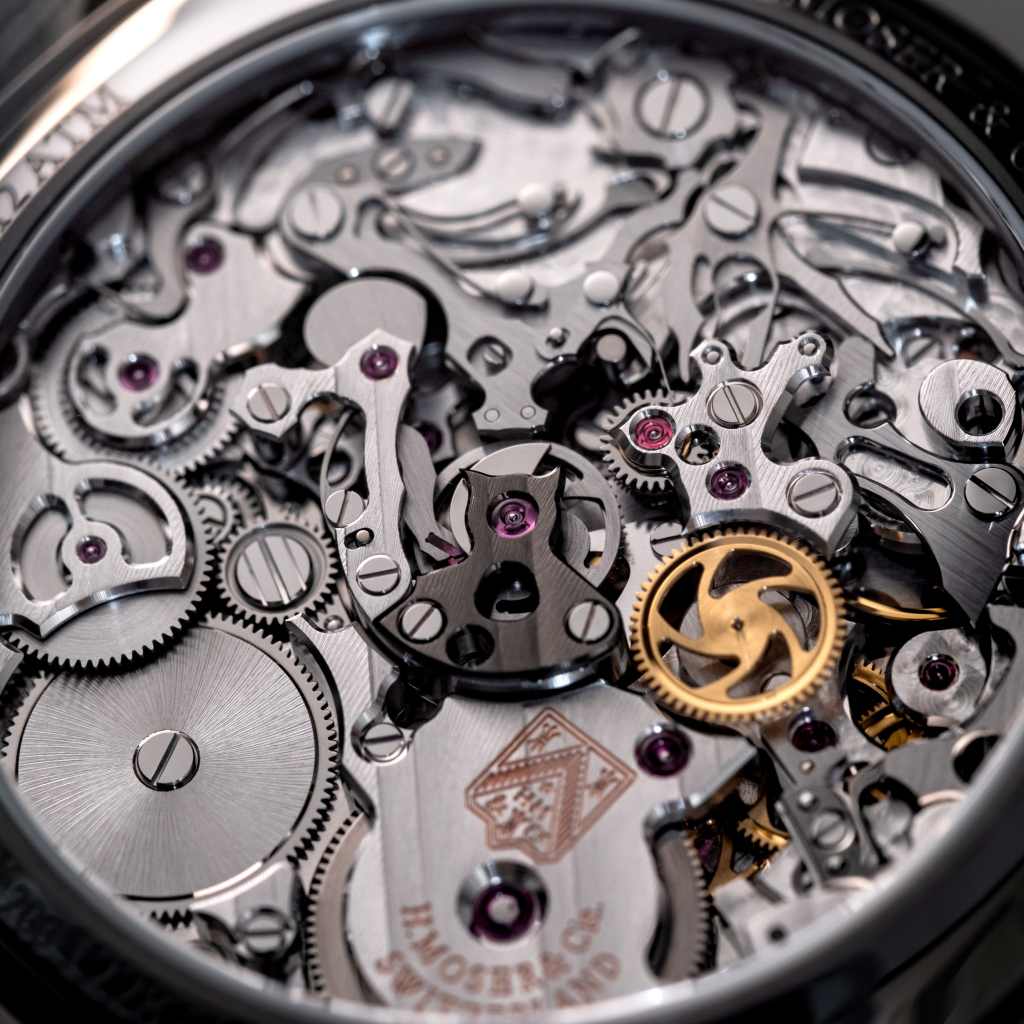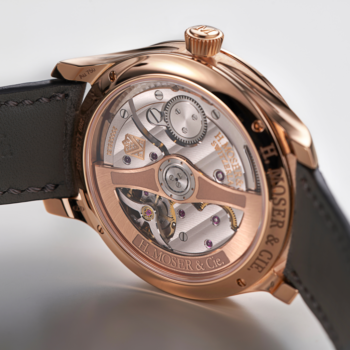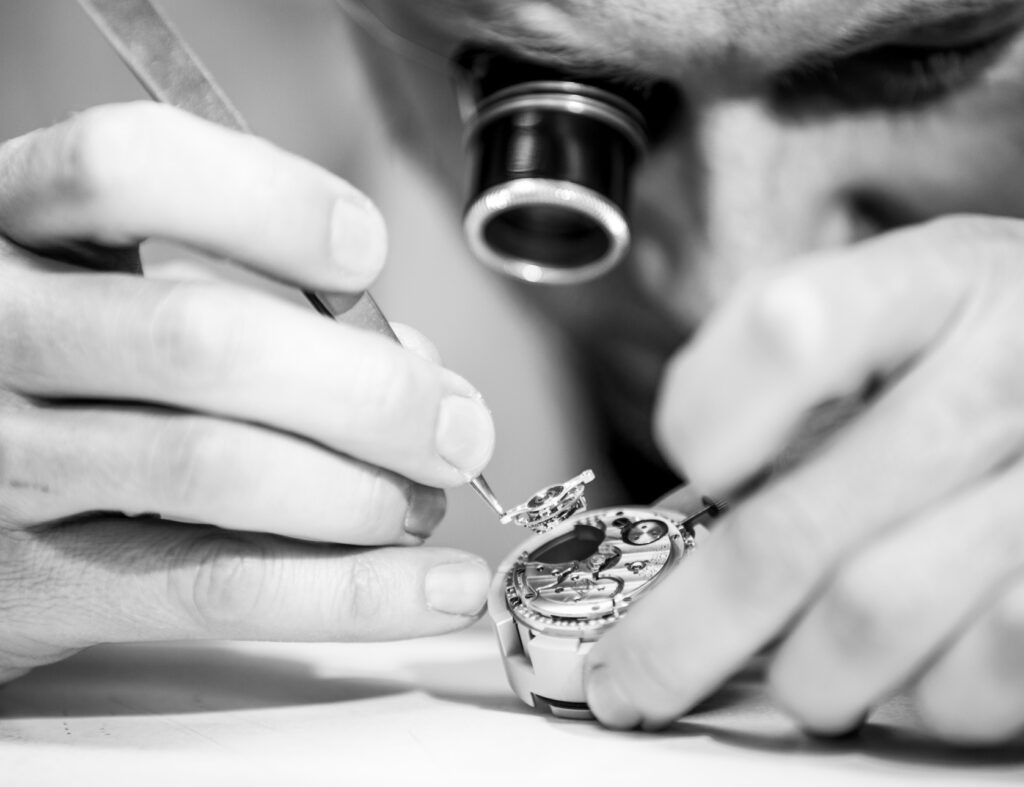In the world of horology, the heart of a timepiece is its movement. It’s the internal engine that powers the hands around the dial, and it’s the soul that gives life to the watch. But what exactly is a mechanical movement, and how does it work? Let’s take a journey through this fascinating world of with luxury watchmaking maestros at H. Moser & Cie.
What is a mechanical movement?
A mechanical in its simplest form, is a complex system of gears, springs, and levers that work together to power the hands and keep time. A mechanical movement is made up of six key components:
Mainspring: a coiled spring that stores energy to power the movement of a mechanical watch.
Hairspring: also known as the balance spring, this is a very fine spring that controls the back and forth (oscillation) of the balance wheel, regulating the watch’s timekeeping.
Balance wheel: the part that swings back and forth at a constant rate, working with the hairspring to regulate the flow of time in a watch.
Pallet fork: a small lever that interacts with the escape wheel to control the release of energy from the mainspring.
Escape wheel: a mechanism that transfers energy to the balance wheel and allows the gears to advance at a regulated pace.
Escapement: a toothed wheel that works with the pallet fork to control the release of energy from the mainspring in a precise and controlled manner, essential for accurate timekeeping.
All of these components work in perfect harmony to regulate the release of energy inside the watch, ensuring the accuracy of its hours, minutes and seconds. It’s a marvel of precision engineering and craftsmanship, and it has been the standard in high-quality watchmaking for centuries.
Miniature symphony
A mechanical is a miniature city, bustling with activity, in which every gear, spring, and lever has a role to play. It drives the timekeeping functions and powers any additional features – like a chronograph, or a moon phase display – without a single volt of electricity. It’s like a symphony of tiny parts working in harmony, a symbol of human ingenuity.
Here at H. Moser & Cie. we’ve been ticking away at the heart of the Swiss watchmaking industry for almost 200 years, crafting timepieces that are not just watches, but pieces of art. Founded in 1828, H. Moser & Cie. is an integrated manufacturer, which means we design and craft our movements entirely in-house. The brand has been responsible for significant and groundbreaking advancements in mechanical movements time and time again, and the company’s rich history is peppered with horological masterpieces, each an example of our commitment to precision, quality, and innovation.
Unique blends
Over the years, H. Moser & Cie. has become known for its innovative approach to traditional complications in luxury watches, introducing features that have pushed the boundaries of possibility in mechanical timepieces. For instance, our Perpetual Calendar movement, introduced in 2005, incorporated a complex complication into a remarkably minimalist and user-friendly design. The Perpetual Calendar is a prime example of our expertise in crafting mechanical movements, and is just one example of how H. Moser & Cie. continues to redefine the art of watchmaking with a unique blend of traditional craftsmanship and modern innovation.
Another standout is the Endeavour Tourbillon, further proof of the brand’s technical prowess and artistic vision. The tourbillon, a feature designed to counteract the effects of gravity on the watch’s accuracy, is a feat of mechanical engineering. It’s like watching a ballet of balance and momentum on your wrist. Furthermore, H. Moser & Cie.’s tourbillon movements are fitted with a double hairspring (crafted in-house) that works simultaneously, improving their accuracy, making them more precise than a tourbillon with a single hairspring. And let’s not forget the Streamliner Flyback Chronograph Automatic, a mechanical movement that combines a flyback chronograph with a central display and an automatic winding system.
A celebration of skill
The enduring appeal of mechanical movements is woven into the legacy of H. Moser & Cie. The company represents a bridge between our past and our future, a tangible link to a time when craftsmanship and quality were paramount. More so than other movements like quartz, mechanical movements have a timeless charm that continues to captivate enthusiasts and collectors alike. In an age where digital technology is pervasive, the intricate craftsmanship and engineering of mechanical movements stand as a testament to human artistry. They represent a connection to tradition, a celebration of skill, and a commitment to quality that transcends fleeting trends. As long as there’s an appreciation for the fine art of watchmaking, mechanical movements will have a future in watches. They are not just mechanisms; they are symbols of heritage, elegance, and enduring value.
So, the next time you glance at your wrist to check the time on your H. Moser & Cie. watch, take a moment to appreciate the power of the mechanical wonder ticking away inside. After all, you’re not just wearing a watch; you’re wearing a piece of history.









